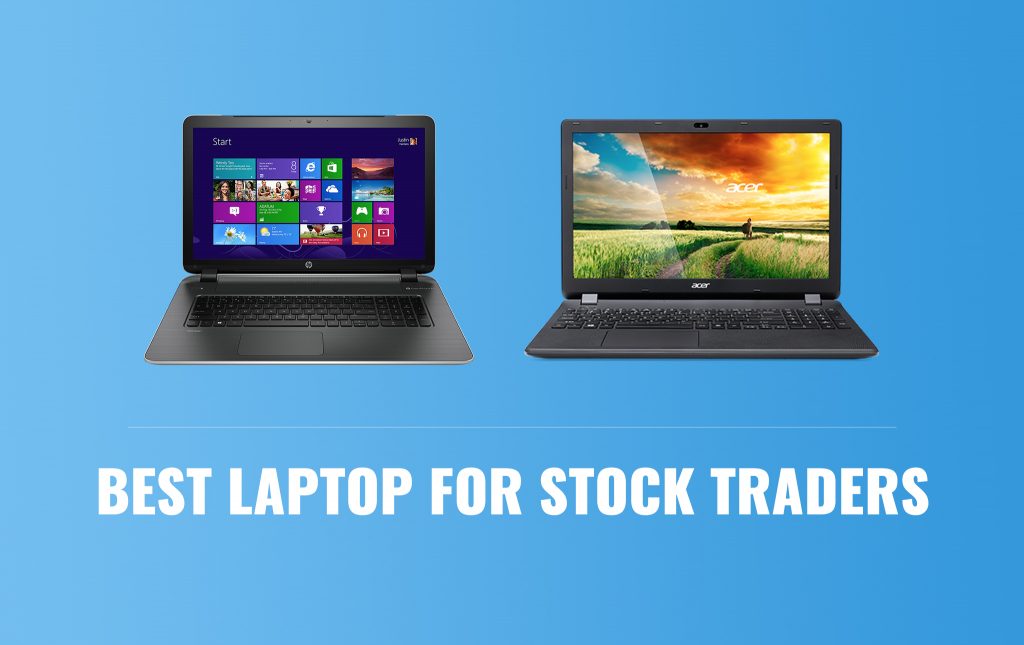Actualité
Net Present Value NPV Definition, Examples, How to Do NPV Analysis
Mise à jour : 8 mai, 2023 à 11:12
Par https://www.linkedin.com/pulse/cheap-legit-essay-writing-services-top-3-picks-2024-intextcitation-vmsee
Contents:


It can be frustrating the first few times you see it as you don’t really know what is causing it but when trying to make longer code, or the code’s output, readable they will both come in handy. The second point is required because due to inflation, interest rates, and opportunity costs, money is more valuable the sooner it’s received. For example, receiving $1 million today is much better than the $1 million received five years from now. If the money is received today, it can be invested and earn interest, so it will be worth more than $1 million in five years’ time.
You would discount the estimated cash flow beyond that fifth-year back to the end of the fifth year. For illustration on how the terminal value is estimated and used for valuation purpose in a project finance model, we have prepared an Excel workbook, which you can download at the top or bottom of this tutorial. Terminal value is the future value of a company at the end of the projection period. It is the value that accounts for the long-term operations of the company. The forecast period is typically 3-5 years for a normal business because this is a reasonable amount of time to make detailed assumptions. Anything beyond that becomes a real guessing game, which is where the terminal value comes in.

The difference between the two values in the denominator determines the terminal value, and even with appropriate values for both, the denominator may result in a multiplying effect that does not estimate an accurate terminal value. Also, the perpetuity growth rate assumes that free cash flow will continue to grow at a constant rate into perpetuity. Consider that a perpetuity growth rate exceeding the annualized growth of the S&P 500 and/or the U.S. GDP implies that the company’s cash flow will outpace and eventually absorb these rather large values. Perhaps the greatest disadvantage to the Perpetuity Growth Model is that it lacks the market-driven analytics employed in the Exit Multiple Approach. Such analytics result in a terminal value based on operating statistics present in a proven market for similar transactions.
Why is terminal value significant?
Often, GDP growth or the risk-free rate can serve as proxies for the growth rate. Gain in-demand industry knowledge and hands-on practice that will help you stand out from the competition and become a world-class financial analyst. A valuation is a technique that looks to estimate the current worth of an asset or company. Investopedia requires writers to use primary sources to support their work.
Get instant access to video lessons taught by experienced investment bankers. Learn financial statement modeling, DCF, M&A, LBO, Comps and Excel shortcuts. In our final section, we’ll perform sanity checks on our calculations to determine whether our assumptions were reasonable or not. The $127mm in PV of stage 1 FCFs was previously calculated and can just be linked to the matching cell on the left. Upon dividing the $37mm by the denominator consisting of the discount rate of 10% minus the 2.5%, we get $492mm as the TV in Year 5.

Then, we can apply this very same multiple to find the TV in this stock. In this example, we calculate the fair value of the stock using the two-terminal value calculation approaches discussed above. Cash FlowThe cash flow to the firm or equity after paying off all debts and commitments is referred to as free cash flow . It measures how much cash a firm makes after deducting its needed working capital and capital expenditures . But once again, the PV of this amount must be calculated by dividing $480mm by (1 + 10% discount rate) raised to the power of 5, which comes out to $298mm.
A negative terminal value would be estimated if the cost of future capital exceeded the assumed growth rate. In practice, however, negative terminal valuations cannot exist for very long. A company’s equity value can only realistically fall to zero at a minimum, and any remaining liabilities would be sorted out in abankruptcyproceeding.
The levered terminal value is calculated using the weighted average cost of capital as the discount rate. The perpetual growth method of calculating a terminal value formula is the preferred method among academics as it has a mathematical theory behind it. This method assumes the business will continue to generate Free Cash Flow at a normalized state forever . In the subsequent step, we can now figure out the implied growth rate under the exit multiple approach. But compared to the perpetuity growth approach, the exit multiple approach tends to be viewed more favorably because the assumptions used to calculate the TV can be better explained . Because of this distinction, the perpetuity formula must account for the fact that there is going to be growth in the cash flows, as well.
Financial modelling of terminal value
The formula for the TV using the exit multiple approach multiplies the value of a certain financial metric (e.g., EBITDA) in the final year of the explicit forecast period by an exit multiple assumption. If the cash flows being projected are unlevered free cash flows, then the proper discount rate to use would be the weighted average cost of capital and the ending output is going to be the enterprise value. Terminal value is a financial concept used in discounted cash flow analysis and depreciation to account for the value of an asset at the end of its useful life or of a business past some projection period.
Summit organized to assist newcomer professionals – Government of New Brunswick
Summit organized to assist newcomer professionals.
Posted: Wed, 03 May 2023 18:59:42 GMT [source]
The first point is necessary because not all businesses, projects, or investment opportunities have the same level of risk. Put another way, the probability of receiving cash flow from a US Treasury bill is much higher than the probability of receiving cash flow from a young technology startup. In addition to factoring all revenues and costs, it also takes into account the timing of each cash flow that can result in a large impact on the present value of an investment. For example, it’s better to see cash inflows sooner and cash outflows later, compared to the opposite. 2 day duration An accurate and flexible financial model is a critical component of a… Carefully establish the cash flow or EBITDA at the last year of the projected period.
Whenever an investor comes across a firm with negative net earnings relative to its cost of capital, it’s probably best to rely on other fundamental tools outside of terminal valuation. If investors assume a finite window of operations, there is no need to use the perpetuity growth model. Instead, the terminal value must reflect the net realizable value of a company’s assets at that time. In a discounted cash flow valuation, the cash flow is projected for each year into the future for a certain number of years, after which unique annual cash flows cannot be forecasted with reasonable accuracy. At that point, rather than attempting to forecast the varying cash flow for each individual year, one uses a single value representing the discounted value of all subsequent cash flows. Terminal value is an important input in the multi-stage discounted cash flow models.
When Evaluating Terminal Value, Should I Use the Perpetuity Growth Model or the Exit Approach?
This provides a certain level of confidence that the valuation accurately depicts how the market would value the company in reality. The disadvantage of the terminal value with the perpetuity growth method, is that both the growth rate and the discount rate are assumptions, and any error in one will result in a wrong terminal value. With the exit multiple method too, if the chosen multiple is high or low then the calculated terminal value will also not be accurate.
Prologis Stock: A Buffett-Style Ultra SWAN REIT Buy (NYSE:PLD) – Seeking Alpha
Prologis Stock: A Buffett-Style Ultra SWAN REIT Buy (NYSE:PLD).
Posted: Thu, 04 May 2023 11:00:00 GMT [source]
In addition, it helps them calculate what the expected value of the business will be. This, in turn, enables them to figure out whether or not they should invest in a project or put more money into shareholders’ pockets through dividends. Terminal value is a financial term that describes the value of a firm at a future time.
Therefore, analysts sometimes drop the growth rate in the formula to arrive at a more conservative terminal value. TV takes into account all possible changes in value expected to occur before the maturity date, such as interest rates, and it assumes a steady growth rate. Theoretically, this can happen when the Terminal value is calculated using the perpetuity growth method. Moving onto the other calculation method, we’ll now walk through the exit multiple approach. Now that we’ve finished projecting the stage 1 FCFs, we can move onto calculating the terminal value under the growth in perpetuity approach. The growth rate in the perpetuity approach can be seen as a less rigorous, “quick and dirty” approximation – even if the values under both methods differ marginally.
Most companies do not assume they will stop operations after a few years. Terminal value is an attempt to anticipate a company’sfuture valueand apply it to present prices through discounting. The terminal growth rate is the constant rate that a company is expected to grow at forever. The two most common methods for calculating terminal value are perpetual growth and exit multiple.
- It becomes more challenging to forecast value the further into the future you attempt to look.
- Also, the perpetuity growth rate assumes that free cash flow will continue to grow at a constant rate into perpetuity.
- To « solve » this, analysts use financial models, such as discounted cash flow , along with certain assumptions to derive the total value of a business or project.
- The long-term growth rate assumption should generally range between 2% to 4% to reflect a realistic, sustainable rate.
A second what does terminal value represent of estimating the terminal value is the exit multiple method which assumes that the business has a finite operation time and at the end the time, the business will be acquired or sold. This assumption implies that the return on new investments is equal to the cost of capital. In DCF, the terminal value is the value of a company’s expected free cash flow beyond the period of an explicit projected financial model. The perpetuity growth approach is recommended to be used in conjunction with the exit multiple approach to cross-check the implied exit multiple – and vice versa, as each serves as a “sanity check” on the other. One frequent mistake is cutting off the explicit forecast period too soon when the company’s cash flows have yet to reach maturity. The Terminal Value represents the estimated value of a company beyond the final year of the explicit forecast period, i.e. the Stage 1 cash flows.
Additional Resources
Mary Ann estimates that thefree cash flowin Year 6 will be $20.5 million. This growth rate starts at the end of the last forecasted cash flow period in a discounted cash flow model and goes into perpetuity. A terminal growth rate is usually in line with the long-term rate of inflation, but not higher than the historical gross domestic product growth rate. To calculate the terminal value, you have to first determine your free cash flow at the end of the projection period.
- The final result is that the value of this investment is worth $61,446 today.
- Note that the discount rate is generally the weighted average cost of capital .
- The disadvantage of the terminal value with the perpetuity growth method, is that both the growth rate and the discount rate are assumptions, and any error in one will result in a wrong terminal value.
- Liquidation value assumes the company will not continue operations forever but will be closed and sold at some point in the future, and the estimated net sale value will become the terminal value.
Depending on the purposes of the valuation, this may not provide an appropriate reference range. Thus, the terminal value allows for the inclusion of the value of future cash flows occurring beyond a several-year projection period while satisfactorily mitigating many of the problems of valuing such cash flows. The terminal value is calculated in accordance with a stream of projected future free cash flows in discounted cash flow analysis. For whole-company valuation purposes, there are two methodologies used to calculate the Terminal Value.
The articles and research support materials available on this site are educational and are not intended to be investment or tax advice. All such information is provided solely for convenience purposes only and all users thereof should be guided accordingly. Finance Strategists is a leading financial literacy non-profit organization priding itself on providing accurate and reliable financial information to millions of readers each year. Am working for power sector, please post financing structures and investment analysis with spread sheets.
I’m ssh’ing into a Linux server, so I assume that it’s just the sshd as it says under CMD, but I’m curious what the ? Net Present Value is the most detailed and widely used method for evaluating the attractiveness of an investment. Hopefully, this guide’s been helpful in increasing your understanding of how it works, why it’s used, and the pros/cons. Typically, investors and managers of businesses look at both NPV and IRR in conjunction with other figures when making a decision. If your project falls under the scope of IFRIC 12 – Service Concession Arrangements it can be difficult to understand… We are opening our Digital Classrooms to individual registrations, making our world-leading financial…
They employ terminal value to estimate the future value of projects or companies. Terminal value is used to estimate the value of a project beyond the forecast period of future cash flows. It is the present value of the sum of all future cash flows to the project or company and assumes the cash will grow at a constant rate. The TV of a business or asset includes the value of all future cash flows, even those not part of the projection period, in an attempt to capture values that are typically difficult to predict in regular financial models. Returning to the example from earlier, if the cash flow at the end of the initial projection period is $100 and the discount rate is 10.0% but this time around, there is a perpetuity growth rate of 3%, the TV comes out as ~$1,471.
The exit multiple method also comes with its share of criticism as its inclusion brings an element of relative valuation into the intrinsic valuation. But if the cash flows are levered FCFs, the discount rate should be the cost of equity and the equity value is the resulting output. Terminal value is important in corporate finance for valuing companies in mergers and acquisitions (M&A) and for some analysts who work for investment firms. Some individual investors may incorporate terminal value into their analysis, but not all, because not every investment strategy requires you to know or understand the concept. In other words, suppose you had initially forecast an investment five years into the future, at which point you need to estimate the terminal value.
One must make assumptions about the salvage value of the assets and net working capital. The net working capital may have a certain recovery rate since it might not be readily liquidated at balance sheet values. In the pro forma projections, one often may assume that net working capital will grow at the same rate as cash flow. The terminal value if the firm is liquidated then is the sum of the discounted value of the cash flow, the recovered net working capital, and the salvage value of the long-term assets, including any tax benefits. Mary Ann is a financial analyst at Goldman Sachs and she is asked to value a project using the Gordon Growth model. The project’s cash flows are expected to grow in perpetuity by 2% annually.
But eventually, simplified high-level assumptions become necessary to capture the lump sum value at the end of the forecast period. For example, this information does little for a passive index investor because that style of investing doesn’t rely on individual investment valuations. Mutual fund investors do not need to think about terminal value because even if the fund’s strategy involves the use of terminal value, there are analysts and fund managers handling that for you. Terminal value is the value of an investment or business after a forecast period. The projected statistic, on the other hand, is the relevant statistic projected in the previous year. Intrinsic value is the perceived or calculated value of an asset, investment, or company and is used in fundamental analysis and the options markets.
But another important step is that the TV we calculated is as of Year 5, while the DCF valuation is based on the value in relation to today. Once we discount each FCF and sum up the values, we get $127mm as the PV of the stage 1 FCFs – and this amount remains constant under either approach. Given how the TV accounts for a substantial portion of a company’s valuation, the terminal year must not be distorted by cyclicality or seasonality patterns. The accuracy of cash flow forecasts tends to become less reliable the further into the future one goes.
Dernières actus LeGamer.com:
- 20/09/2024: It’s your Loan, thus Be successful to you personally
- 20/09/2024: An effective Stearns Financial unit unveils smooth brief-money seven(a) mortgage equipment
- 20/09/2024: Пин Ап casino — Казино бонусы, лучшие акции и бонусы от казино
- 20/09/2024: Pros and cons off Fannie mae guidance
- 20/09/2024: This type of underwriting conditions can alter over the years given that mortgage borrowing availableness eases and you may tightens




